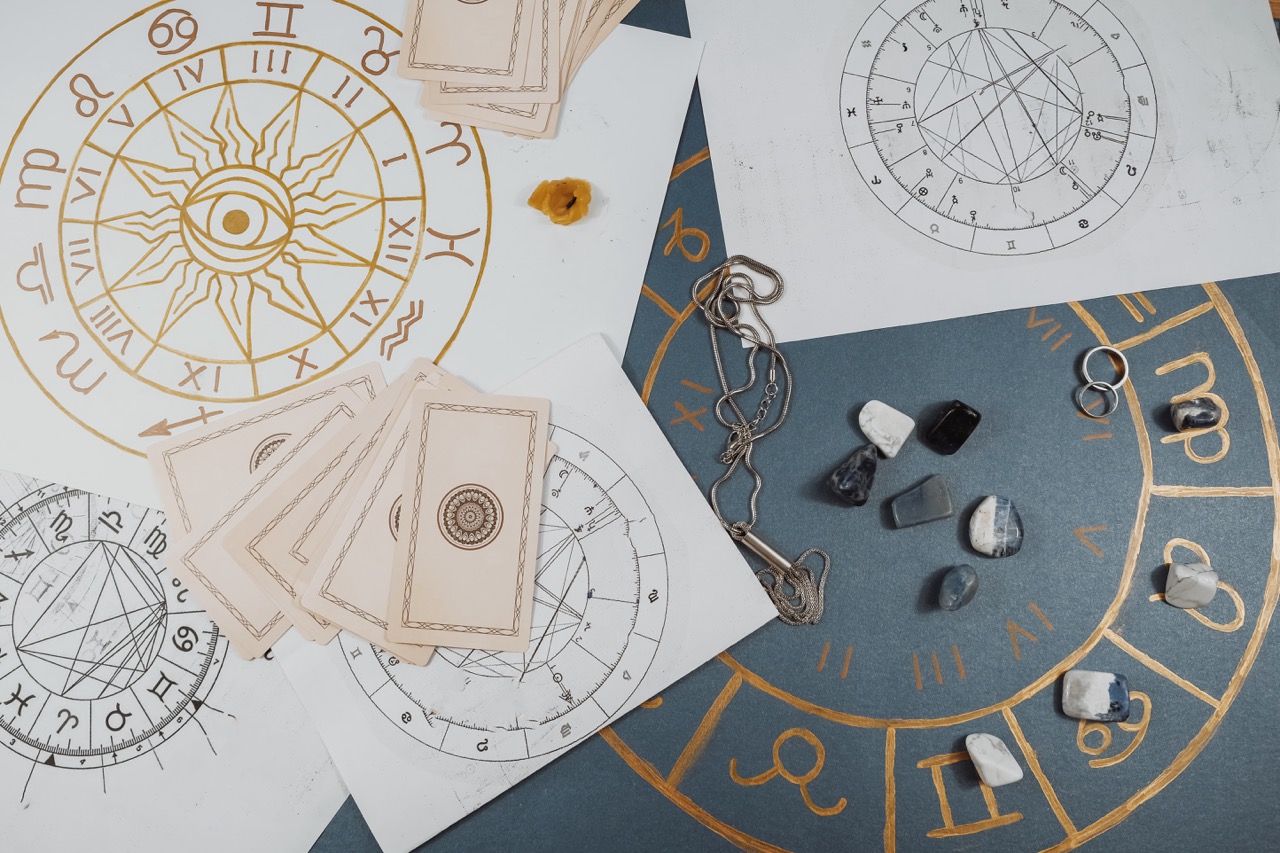In the vast expanse of the cosmos, two fields often find themselves intertwined yet distinctly separate in purpose and philosophy: astrology and astronomy. While both disciplines gaze upward to the stars, their interpretations and implications diverge in fascinating ways. To understand the cosmic divide between these two domains, one must delve into their roots, methodologies, and the language they employ to communicate their insights about the universe and our place within it.
The Cosmic Divide: Astrology Meets Astronomy’s Realm
At first glance, astrology and astronomy may seem inseparable, as they both share a common fascination with the cosmos. However, the philosophies underpinning each are markedly different. Astronomy is the scientific study of celestial bodies, including stars, planets, and galaxies, grounded in empirical observation and mathematical laws. Its practitioners seek to understand the mechanics of the universe, asking questions about the origins of celestial phenomena and their physical properties. In contrast, astrology posits a profound connection between the positions of celestial bodies and human experiences, suggesting that the movements of planets and stars can influence individual destinies.
The historical context further illuminates the divide. Astrology dates back millennia, intertwining with early religious and spiritual beliefs, as ancient civilizations looked to the heavens for guidance and meaning. Astronomical observations were often made by astrologers, who used the data to create horoscopes and predict events on Earth. Over time, however, the two disciplines began to evolve separately, with astronomy emerging as a rigorous scientific field while astrology remained rooted in mysticism and personal insight.
The contemporary perspectives on astrology and astronomy also highlight their differences. While many people still find comfort and meaning in astrological readings and horoscopes, the scientific community views astrology as a pseudoscience, lacking empirical support. This dichotomy sets the stage for ongoing debates about the nature of truth and the human desire to find patterns and significance in the universe.
Celestial Wisdom: Understanding Astrology’s Roots
Astrology’s roots lie in an ancient quest for understanding the mysteries of existence, reflecting humanity’s longing to connect with the cosmos. The practice of astrology was prevalent in ancient cultures, including the Babylonians, Egyptians, and Greeks. These civilizations believed that the positions of celestial bodies at the time of a person’s birth could reveal essential insights about their personality, relationships, and life path. The astrological wheel, with its twelve zodiac signs, became a powerful tool for interpreting these cosmic influences.
Astrology also draws upon archetypes and symbols, creating a rich tapestry of meaning that resonates with the human experience. Each zodiac sign embodies specific traits, emotions, and mythological narratives, allowing astrologers to provide personalized insights into an individual’s character and life circumstances. This symbolic language invites individuals to explore their inner selves and understand their relationships with others and the universe.
Furthermore, astrology has evolved over centuries, adapting to cultural shifts and incorporating new elements while retaining its core principles. Modern astrology often emphasizes self-discovery and personal growth, providing a framework for individuals to navigate life’s challenges and embrace their unique journeys. This blend of ancient wisdom and contemporary relevance continues to captivate many seekers looking for guidance.
Science in the Stars: The Foundations of Astronomy
In stark contrast to astrology’s symbolic interpretations, astronomy is steeped in scientific inquiry and discovery. As a branch of natural science, astronomy systematically examines celestial phenomena through observation and experimentation. From the intricate movements of planets to the birth and death of stars, astronomers employ advanced technologies and methodologies to decode the mysteries of the universe. This rigorous approach has led to groundbreaking discoveries, such as the existence of exoplanets and the understanding of cosmic expansion.
The foundations of astronomy are built on mathematical principles and physical laws. The use of telescopes and satellites allows astronomers to collect data about light emitted from distant celestial bodies, enabling them to analyze their composition, temperature, and distance from Earth. This empirical approach distinguishes astronomy as a science, fostering a deeper understanding of the universe’s workings and revealing the intricate dance of celestial mechanics.
Moreover, astronomy relies on the peer-review process and collaborative research, ensuring that findings are validated and widely accepted within the scientific community. This commitment to accuracy and objectivity has led to a vast wealth of knowledge about the cosmos, paving the way for space exploration and the development of technologies that enhance our understanding of the universe and our place within it.
The Language of the Universe: Charts vs. Celestial Bodies
Astrology and astronomy utilize vastly different languages to communicate their findings, and this divergence highlights their distinct approaches. Astrologers create intricate birth charts, mapping the positions of celestial bodies at the moment of an individual’s birth. These charts serve as a form of cosmic blueprint, offering insights into an individual’s personality traits, strengths, and challenges. The language of astrology is rich in symbols, archetypes, and narratives, inviting individuals to engage in a deeply personal exploration of their lives.
Conversely, astronomers communicate using technical jargon and mathematical equations, focusing on quantifiable data. The language of astronomy is grounded in empirical evidence, with celestial bodies classified and described based on their physical properties and behaviors. Astronomers often rely on charts and graphs to represent their findings, providing a visual interpretation of the vastness and complexity of the universe. This scientific language prioritizes clarity, precision, and objectivity, reflecting the discipline’s commitment to understanding the cosmos through a factual lens.
The contrast between these two languages reveals the broader philosophical differences between astrology and astronomy. While astrology invites subjective interpretation and personal connection, astronomy emphasizes objectivity and scientific rigor. Together, they embody humanity’s quest for meaning and understanding in the face of the infinite universe.
Predicting Futures: How Astrology Interprets the Stars
Astrology’s central premise hinges on the belief that the positions of celestial bodies can influence human experiences and events on Earth. Astrologers interpret the movements of planets through the lens of zodiac signs and houses, translating these cosmic patterns into predictions about an individual’s life path. For many, astrology serves as a tool for self-reflection, helping individuals make sense of their experiences and navigate the challenges and triumphs that life presents.
Astrological predictions often revolve around key life events, such as relationships, career changes, and personal growth. By analyzing transits and progressions, astrologers offer insights into potential opportunities and challenges that may arise, encouraging individuals to harness the energies of the cosmos. This predictive aspect of astrology can provide comfort and guidance, empowering individuals to take informed actions based on the current cosmic climate.
However, the predictive nature of astrology has its critics. Skeptics argue that astrology lacks empirical evidence and is rooted in superstition rather than scientific fact. Despite this, astrology maintains a loyal following, with many individuals finding value in its insights and guidance. Ultimately, astrology’s allure lies in its ability to weave together the threads of human experience and cosmic patterns, inviting individuals to explore the mysteries of their lives through a celestial lens.
Bridging Belief and Science: Finding Common Ground
While astrology and astronomy may seem worlds apart, there exists a potential for bridging belief and science. Both disciplines share a profound reverence for the universe and the mysteries it holds. For those who seek to understand their place within the cosmos, astrology offers a narrative framework that resonates with the human experience, while astronomy provides the scientific grounding to appreciate the beauty and complexity of the universe.
The dialogue between astrology and astronomy raises intriguing questions about the nature of knowledge and belief. While empirical evidence is paramount in science, the human experience often transcends numerical data, seeking meaning and connection in the cosmos. This intersection invites a broader exploration of how individuals relate to the universe, acknowledging that both scientific inquiry and personal belief systems can coexist.
In an age where science and spirituality often seem at odds, finding common ground between astrology and astronomy can lead to a richer understanding of the universe and ourselves. By recognizing the value of both perspectives, we can cultivate a more holistic view of our place in the cosmos, embracing the mysteries that bind us to the stars.
In the grand tapestry of existence, astrology and astronomy offer unique lenses through which to explore the cosmos. While one invites personal introspection and meaning, the other emphasizes empirical understanding and scientific discovery. Their interplay enriches our quest for knowledge, reminding us that the universe is a vast and complex entity that holds both mysteries and truths. As we continue to gaze at the stars, may we embrace the wonder of the cosmos and the myriad ways we seek to understand it—both scientifically and spiritually.




